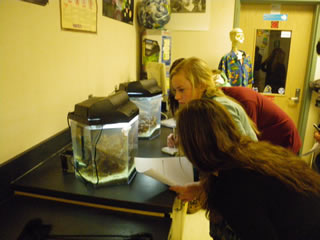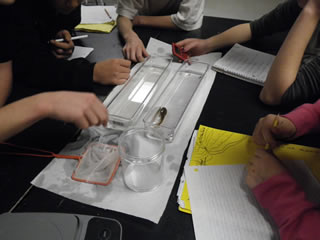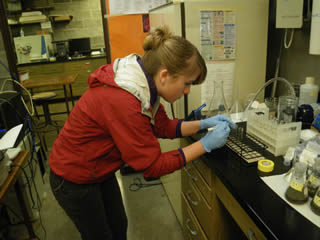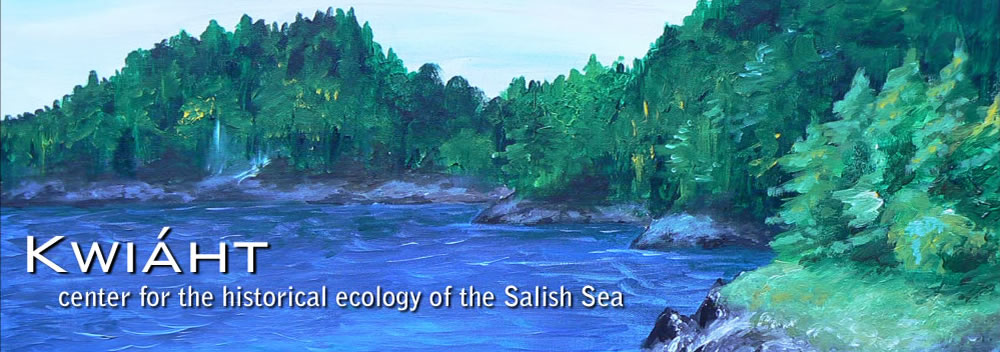Toxicology and Consumer Empowerment

Friday Harbor students use microcosms to test toxins
At Kwiáht, we are frequently asked whether various products are "safe," from soaps and shampoos to herbicides, pesticides, and food additives. This can be a difficult question to answer, even for products whose ingredients are fully disclosed and adequately tested on representative animals and plants. Much depends on use—not just how much, but where it goes (garden, central sewage treatment, onsite septic system, storm drain) and weather (temperature, light levels, and precipitation affect mobility and degradation rates). In the San Juan Islands, only one thing is clear: the sea, or a stream or ditch that flows into the sea, is rarely more than a "stone's throw" distant. There is very little opportunity for any product-laden rainwater to slow down and infiltrate soils or sediments.

Lopez students assay sediments for antibiotic resistance
In 2009-2010, with support from the Washington State Department of Ecology, Kwiáht inventoried all of the herbicides and pesticides for sale in San Juan County, indexed all of their declared ingredients, and scored them according to experimentally reported effects on honeybees and rainbow trout. Scores and data were freely available to consumers; but results were biased in favor of products with unidentified, purportedly inactive adjuvants and propellants, and products with untested active ingredients such as "natural" oils and other plant extracts.

Tadpole raceway for toxic effects testing
Surfactants (soaps, detergents, emulsifiers) and fragrances were found in many consumer products, including biocides and hand sanitizers as well as cleaners. Very little toxicology data is available for widely used surfactants that do not qualify as food, drugs or biocides. Very few surfactants are identified to chemical species or even family on product labels. As a result, it is only possible to test the whole product, and compare its toxicity to other products that consumers may choose from. Kwiáht researchers and students have tested more than 50 locally available shampoos alone, using standard test organisms including Daphnia magna, Gammarid pulex, Vibrio fischeri, and Chlamydomonas, concluding that nearly all of the products are comparably toxic (within one order of magnitude), and that differences may largely be attributable to the toxicity of added fragrances. This continues to be a subject of study at Kwiáht, mainly through our science enrichment program in the islands' schools.

Lab assistant Courtney Clark
Research Papers:
False Bay Creek - Contaminants and Sources
